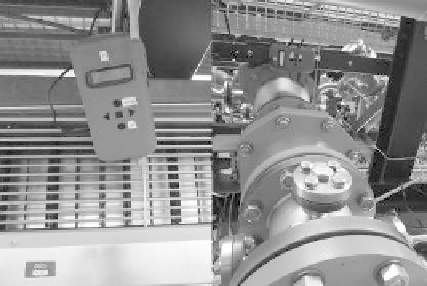Biomedical Engineering Reference
In-Depth Information
FIGURE 11.3
Placement of diffusion charger based monitors (miniDiSC) during tier 2b
measurements, left: at the ventilation inlet and right: above a valve that had been identified
as a potential leak.
earlier for the screening measurements to judge whether the workplace concentra-
tion is significantly increased over the background concentration.
If tier 2a or 2b reveals that the particle concentration in the investigated work-
place is significantly increased over the background concentration and the reason
for this increase cannot unambiguously be tracked back to other, not-nanomaterial
related sources, an expanded measurement according to tier 3 is recommended.
11.2.3
t
ier
3
The aim of tier 3 measurement campaigns is to verify (or falsify) that nanomaterials
have been released into the workplace under investigation, leading to an exposure of
workers to nanomaterials. The tier 3 measurement strategy was developed for online
measurements of particle size distributions and total concentrations, which are to be
used in combination with particle sampling for consecutive chemical and morpho-
logical analyses. Tier 3 measurements are always accompanied by measurements of
at least the total background particle concentration. On the basis of this combination
it is possible to undertake an estimation of the inhalation exposure to nanoscale
product materials at workplaces, and in particular to delimit them in relation to pos-
sible background concentrations.
Tier 3 typically includes the measurement of particle size distributions in the
submicron and micron size range using electrical mobility spectrometers (SMPS
or FMPS) and aerodynamic (APS) or optical (OPC) spectrometers, respectively.
Those size distribution measurements are accompanied by the measurement of the
total particle number concentration using CPC. Sometimes the LDSA concentration
and—to comply with conventional exposure assessment—the particle mass concen-
tration of, for example, the alveolar dust fraction (particles <10 µm) are also mea-
sured. The latter can be measured either time resolved by using Tapered Element
Microbalances (Patashnick and Rupprecht 1991) or optical spectrometers or time
integrated by sampling particles onto filters and weighing them before and after
sampling. These filters can also be used for wet chemical analyses of the chemical

Search WWH ::

Custom Search